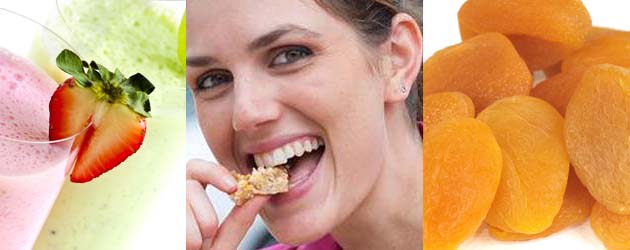Healthy organic fruits and vegetables
Simple "Food Rules"
The "Food Rules" below are based on the conclusions from my paper "Life on Earth - flow of Energy and Entropy". Food is a vehicle to deliver Energy and Negative Entropy (organization) to living organisms. Any kind of food processing increases food's Entropy, making it less valuable for the sustaining of Life, thus promoting disease and the aging process. Below are some specific rules based on this model:
Foods to Avoid
Non-organic, genetically-altered, irradiated and highly processed foods - in particular: all sorts of fast, processed foods, hamburgers and other red meats (animals are too high on the food chain), vegetables, fruits, eggs and seafood produced on non-organic farms, margarines & shortenings (hydrogenated oils - very dangerous ! Hydrogenation is a chemical process which damages the molecular structure of oils and fats, forming many toxic molecules not found in nature.), deep-fried foods, ice cream, homogenized and skim milk, non-organic and non cold-pressed oils, sweets, chocolates and pastry which are made from refined sugars, hydrogenated oils (margarines & shortenings - if margarine was better for health than butter, cows would evolve to make margarine) and non-organic and highly-processed ingredients, soft drinks which are not based on natural juices and are highly- processed, artificial sweeteners, colours etc., all should be avoided. Avoid soy and soy-derived food products. They contain food absorption inhibitors, hormone disruptors, neurotoxins, denatured proteins, solvents and aluminum. For more information look under "Soy Alert !".
By Pamela Rae Schuffert
- Eat organic food which has not been genetically altered.
- Eat food which is local and as fresh as possible. Eat foods which were familiar to your ancestors, rather than exotic foods not known in your region. Test these foods for your tolerance first if you wish to eat them. Test them item by item and then in combinations.
- Eat food which is as close to the Sun as possible (i.e. low on the food chain). This usually results in much reduced levels of contaminants and fewer "broken" molecules which promote the aging process. Also, more food can be produced this way, therefore it is an environmentally-friendly way of eating.
- Plant sources of organic substances are better than animal sources, since they are lower on the food chain. Again, one will find fewer contaminants in plants and fewer "broken" molecules which promote the aging process.
- Avoid the processing of foods. The most valuable benefit of food is when it is raw. If processing is required, (due to viruses, bacteria, parasites or to improve digestion) - short cooking in boiling water, (at 100 degree Celsius) is the safest with the least damage. Frying, BBQ, Micro-waving, baking, etc., all damage the structures of foods due to high temperatures, making them less valuable. It also produces "broken" molecules which are then incorporated into one's body, speeding up the aging process. If one's body cannot synthesize certain molecules, it most likely cannot check them atom-by-atom for lack of structural damage. Damaged structures will be therefore incorporated into the body, speeding-up the aging process. Simple experiments on lab animals could easily prove this.These ways of handling food could be called "Low Entropy Cooking" or "Low Entropy Diet". The benefits of this kind of food preparation are; money-saving, since food contains more valuable ingredients; time saving, since it takes much less time to prepare food this way; health improvement and maintenance, since this food will deliver all the required components for the body and its immune system; extension of the life span, since this kind of food will slow the aging process (by about 20% to 40% in my estimation).
- Eat moderate amounts of food and divide it into 5 small meals a day. In this way, your body will digest and absorb food more thoroughly.
- Do not mix too many foods at once. Certain foods go well together and promote better digestion.
- Each meal should be well-balanced and should contain vitamins, minerals, fiber, proteins, oils, enzymes, water, etc.
- Avoid foods which use cheap, non-organic ingredients and are overprocessed. These foods will have a lot of contaminants and many molecules in these foods will be damaged due to heavy processing. This will result in health problems and promote aging (as much as 20% to 40% in my estimation).
- Avoid foods containing preservatives or those that have been irradiated with X-rays, gamma and other rays. If bacteria are not eating the food, it is probably not good for you.
- Your diet should include: plant protein (whole grains and beans are the best source), various plant oils (whole grains, seeds, nuts and beans are the best source), various nuts (fresh almonds and hazel nuts are best), various types of fish which are from the ocean and are low on the food chain, vitamins and minerals, eggs, yogourt, milk and white cheese (goat's milk is the best, if you can tolerate this).
- A good diet should include 8 to 16 glasses of pure, body-temperature, well pH-balanced water per day. Contaminants such as chlorine, lead, pesticides, herbicides etc., should be removed with a good-quality water filter from reputable companies.
Organic foods, supplements and books can be found in your local organic food stores. Always check ingredients and the source of your food as well as what kind of processing it underwent.













